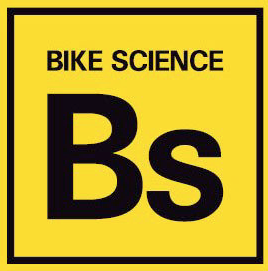I often wear a T-Shirt whilst working in our Bristol shop that has the words "Because Bikes Work Better When They Fit" printed on the front. We came up with this slogan when Bike Science first opened in 2010. In that time, having performed many thousands of fits, I think maybe a better way of putting it would have been, because bodies work better when they're on a bike that fits them.
At Bike Science we are known for using the Retül system. This is a dynamic fitting system. Sounds posh eh? Retül accurately measures rider movement whilst they are riding their bike on a turbo trainer. At our HQ in Bristol, we use a Wahoo Kickr direct drive turbo trainer, which gives us accurate and highly repeatable control of rider power output whilst we're taking measurements. We combine Retül with a number of other techniques to form our own unique fitting process.
All this tech is great for helping an experienced fitter gather information upon which to make his/her fitting decisions. I've been asked a few times recently if computerised fitting will ever take the place of an experienced eye. Whilst I'd never say never, currently no fitting system anywhere is even close to being a substitute for an observant, questioning and experienced fitter. Nothing replaces the art of observation, asking the client the right questions and experience in knowing what changes to make, in what order and how long a rider can expect to take for changes to feel.
Small changes can make a BIG difference

Before - Tight, hunched shoulders, insufficient leg extension, compromised hip movement

After - Long supple back, loose relaxed neck and arms, easier hip movement, more fluid pedal stroke
If you Google what constitutes a good bike fit you'll more than likely find a list of numbers; knee angles, back angles, hip angles etc. etc. For a good fitter, equipped with a measurement system such as Retül these are however the starting point for a fit, not the end goal. The end goal is to set the contact points of the bike up in such a way that good posture is encouraged, the rider feels relaxed and in balance, injury risk is minimised, pedalling is fluid and efficient and the rider uses an achievable level of muscular effort to maintain healthy posture. For a fitter, this involves observing the position and movement of the rider pelvis, how the rider sits on the saddle, the shape of the spine, tension in the muscles of the arms, back and shoulders plus many other visual cues that indicate if the riding position is likely to be both powerful, comfortable and sustainable.
What works for one rider may not work for another and every rider has their own preferences, goals, imbalances, injury history and level of flexibility. Sometimes changes are major and may need a gradual progression towards in order to allow rider adaptation. On other occasions improvements can be immediate and major.
At Bike Science we're experienced in working with all levels of rider, from first timer to professional athlete, so no matter how and what you ride we can help your comfort and performance.
Why not Book a Bike Science Bike Fitting at any of our current UK locations and make this season your best ever...?
BRISTOL - BILLERICAY - DERBY - FOLKESTONE - PUTNEY - RICHMOND (NORTH YORKS)

